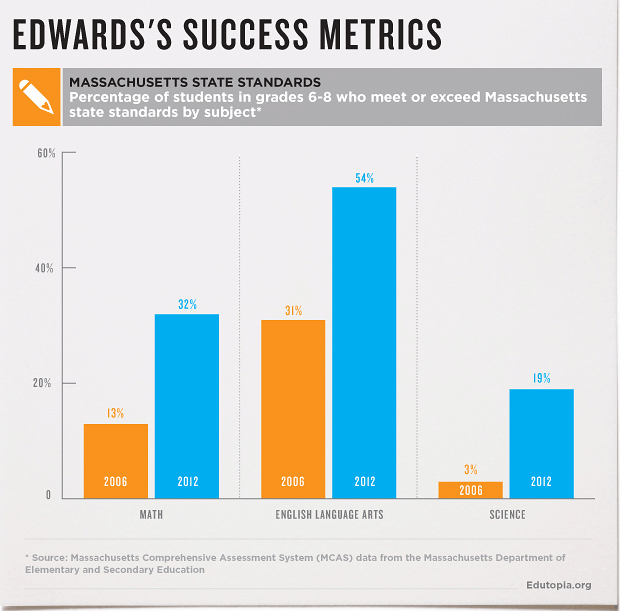Expanded Learning Time in a Middle School in Massachusetts
Each hour is 60 minutes. 240 minutes add up to four hours. Devoting one hour for each subject means in a period of four hours, four subjects can be covered. These four subjects can be regarded as the core. Adding other subjects like physical education, recess, and lunch means that even if children begin their schooling as early as 7 in the morning, a school day cannot end before noon. This is one reason why multiple shifts in schools are not good for education. Classrooms are important and this school need must be met as soon as possible before any educational measure is implemented.
Edutopia, What Works in Education, a site of the George Lucas Foundation has been highlighting a middle school in Boston, Massachusetts. The school, Clarence R. Edwards Middle School, ten years ago was facing the challenges of English language learners and low scores in the state's standard exams in math, English and science. Since 2006, the school added hours to its instructional time in the hope of saving the school. The following suggests that such approach is working:
 |
| Figure captured from http://www.edutopia.org/stw-expanded-learning-time-research |
An example of an Enrichment Program is the Citizen Schools.
- Enrichment Programs: Fine arts, sports, physical education, and career apprenticeships with community organizations
- Academic Leagues: Additional instruction targeting areas where students struggle most
- Continuous Professional Learning: Team building and collaborative analysis of student data to tailor instruction to students' needs
The Citizen Schools day is long, rigorous, and fun. The program begins at the end of its host school's regular class day, usually between 2:30 and 3:30 p.m. and leads with an Opening Circle. In this team-building call-and-response exercise, a Citizen Schools professional goes through the day's schedule, concluding by yelling out "Teach!" to which the students reply in unison, "Back!" Teach Back is a basic precept of Citizen Schools, shorthand for mastering a subject so thoroughly that you can teach it back to others. A similar pep-type rally signals the 6 p.m. end of the Citizen Schools day.
The first hour or so of the Citizens Schools session is spent in classrooms where students read, write, and do their homework assignments. This session -- called AIM (Aspire, Invest, Make the Grade) -- enables students to work individually with team leaders on academic areas in need of improvement. Periodic breaks and snacks of orange slices and string cheese keep adolescent blood sugar in balance.
Thursday is Exploration Day, devoted to the kinds of events and outings that try to be as entertaining as they are educational. In-school programs include presentations about nutrition, science, history, and antigang education. Exploration Day's real fun, however, comes during trips to coastal-cleanup events and visits to bowling alleys, ice-skating rinks, miniature race car tracks, and even a laser-tag arcade. The latter activity, especially, may not necessarily qualify as pure education, but the virtual reality gunfight is layered with a lecture on lasers. (http://www.edutopia.org/citizen-schools-after-school-program)The following is a video:
The additional programs are additional. These do not replace the the formal instructional hours devoted to the core subjects. Clarence R. Edwards Middle School shows what works. It does present challenges. It requires time and effort. But this is what a true education reform looks - it is so much more than just sound bites.
Comments
Post a Comment